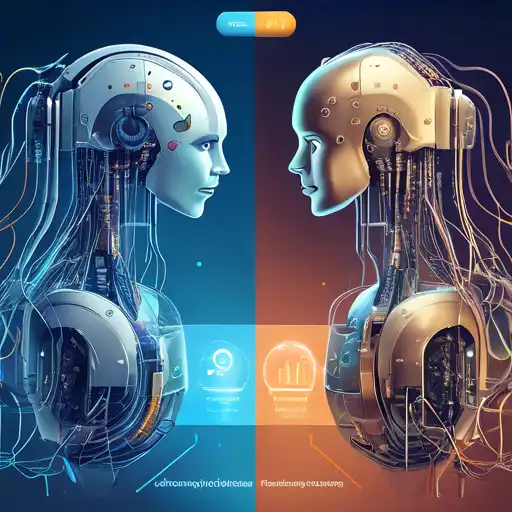Introduction to Machine Learning and Deep Learning
In the realm of artificial intelligence (AI), Machine Learning (ML) and Deep Learning (DL) are two pivotal technologies that have revolutionized how machines interpret data. While they share common ground, their approaches, applications, and complexities differ significantly. This article delves into the key differences between ML and DL, providing insights into their unique characteristics and uses.
What is Machine Learning?
Machine Learning is a subset of AI that enables machines to learn from data without being explicitly programmed. It involves algorithms that parse data, learn from that data, and then apply what they've learned to make informed decisions. ML is widely used in various applications, from email filtering to recommendation systems.
What is Deep Learning?
Deep Learning, a more advanced subset of ML, mimics the workings of the human brain in processing data for decision making. DL uses neural networks with many layers (hence 'deep') to analyze various factors of data. It's particularly effective in tasks like image and speech recognition.
Key Differences Between Machine Learning and Deep Learning
- Data Dependency: DL requires large amounts of data to perform well, whereas ML can work with smaller datasets.
- Hardware Requirements: DL models need powerful GPUs for processing, unlike ML models that can run on lower-end machines.
- Feature Engineering: In ML, features need to be identified and created manually by experts. DL models automatically detect the features to be used for classification.
- Processing Time: DL models take longer to train due to their complexity, while ML models are relatively quicker.
- Interpretability: ML models are easier to interpret and explain compared to DL models, which are often considered 'black boxes'.
Applications of Machine Learning and Deep Learning
ML is commonly used in predictive analytics, fraud detection, and customer segmentation. DL shines in more complex tasks such as autonomous driving, natural language processing, and advanced image recognition. For more insights into AI technologies, check out our guide on AI advancements.
Choosing Between Machine Learning and Deep Learning
The choice between ML and DL depends on the problem at hand, the volume of data available, and the computational resources at your disposal. For simpler tasks with limited data, ML might be the way to go. However, for complex problems requiring the analysis of vast datasets, DL could offer more accurate results.
Conclusion
Understanding the differences between Machine Learning and Deep Learning is crucial for leveraging the right technology for your needs. While ML offers simplicity and efficiency for straightforward tasks, DL provides the power and depth needed for more complex challenges. As AI continues to evolve, the line between these two technologies may blur, but their core differences will remain significant.
